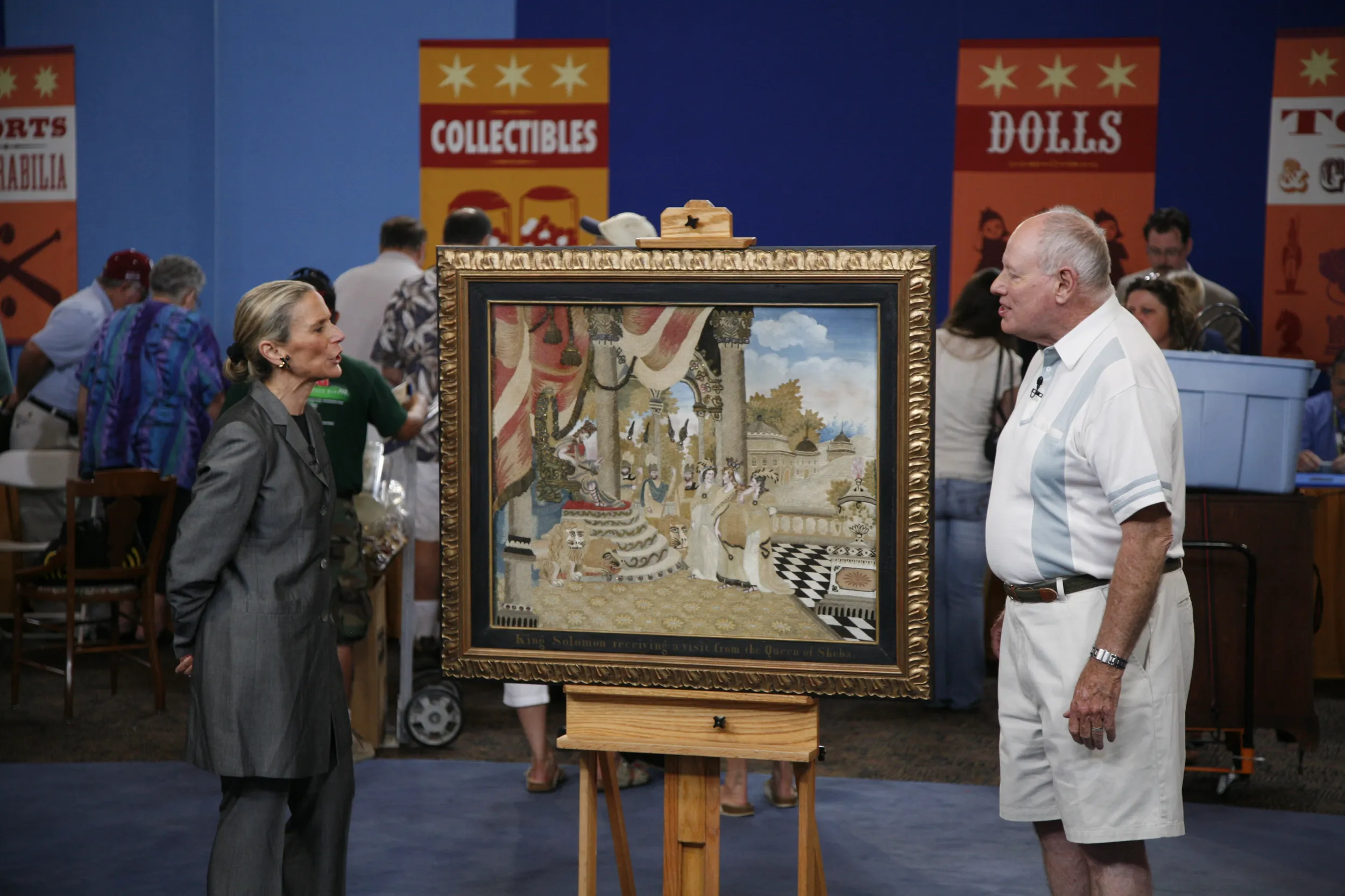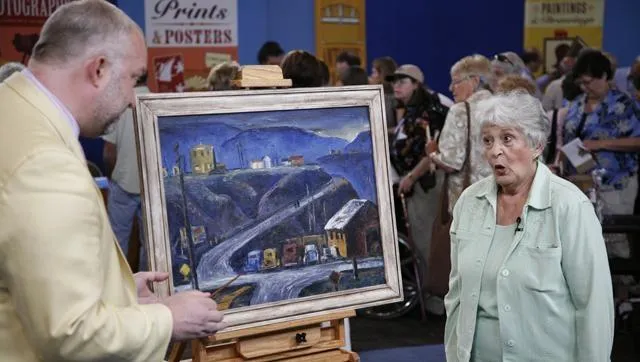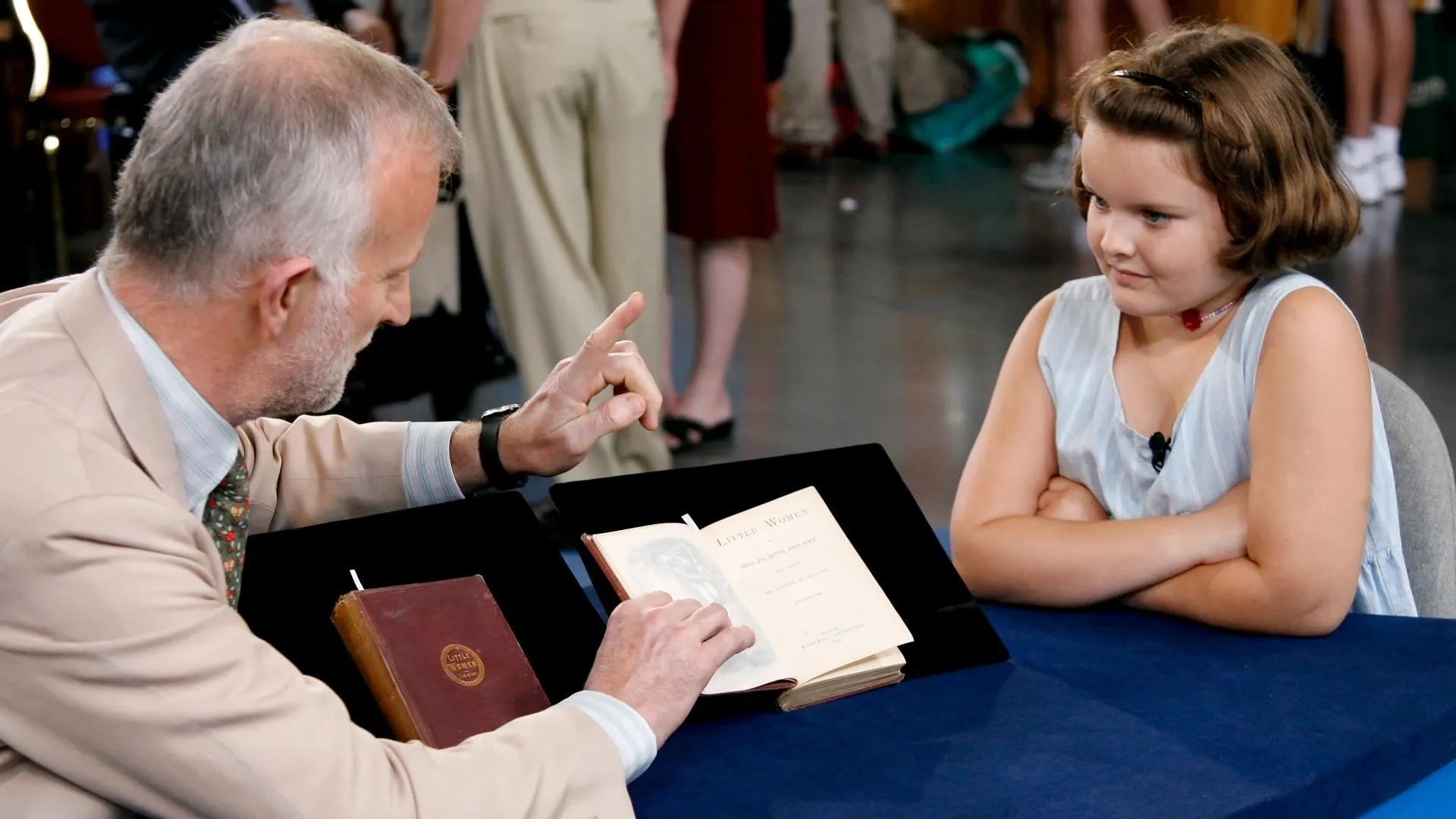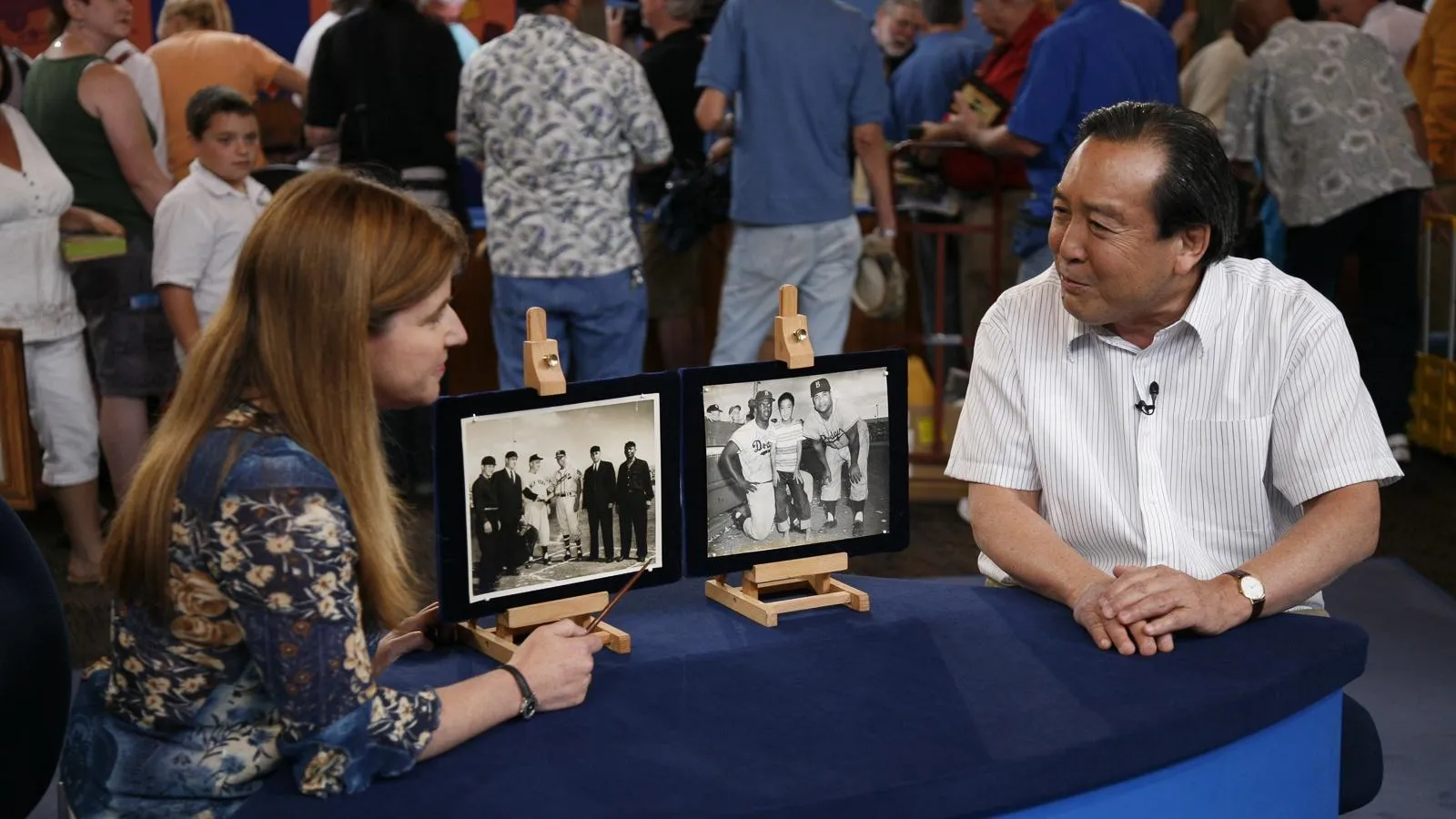GUEST: It was originally done by my great-great-great-aunt in 1819. She was about 15 years old.
APPRAISER: I have to say that I'm bowled over that we are seeing one of the most extravagant and beautiful pieces of Philadelphia schoolgirl needlework. This would have been, for your ancestor, the culmination of several years in a school specifically for the education of affluent young women in Philadelphia, probably the Folwell School, that taught generations of young women needlework. This started life as an enormous sheet of silk. The schoolmistress, or the Folwells, would set the image. This would probably have been taken from a print, and your ancestor painstakingly did all of the stitchery. And it makes use of the most extravagant and beautiful fabric and metal threads. Look at the way that this throne of King Solomon...
GUEST: Right.
APPRAISER: ...is done with gilt and silver threads inset with sequins and glass jewels. The background is all worked in silk chenille threads, and the background of the sky and the faces of the different characters are painted by a professional artist.
GUEST: How did they do this? Were they using little, tiny needles?
APPRAISER: Little, tiny needles, little, tiny silk threads, infinitesimal stitches. It took time, it took patience, it took discipline to do this.
GUEST: How long do you think it would have taken her to do this particular piece?
APPRAISER: I, at least a year. And this would have come at the end of her schooling. You took the original frame off?
GUEST: Yes, the, the original frame was about six to eight inches wider.
APPRAISER: Right.
GUEST: And it was made with doweling and gesso.
APPRAISER: Yeah, okay.
GUEST: Much of the gesso had already broken away.
APPRAISER: Had popped off, yeah. Now, in terms of value, that original frame probably enhances the value of the piece. You do still have the original liner...
GUEST: Right.
APPRAISER: ...that says "King Solomon receiving a visit from the Queen of Sheba." And Elizabeth must have gotten self-conscious about her age later on in her life, because she painted over the "1819."
GUEST: Yes.
APPRAISER: But this is a remarkable piece in remarkable condition. My estimate would be, at auction, somewhere around $60,000 to $80,000.
GUEST: (laughing): Oh, my! That's quite a bit.
APPRAISER: Yeah.














